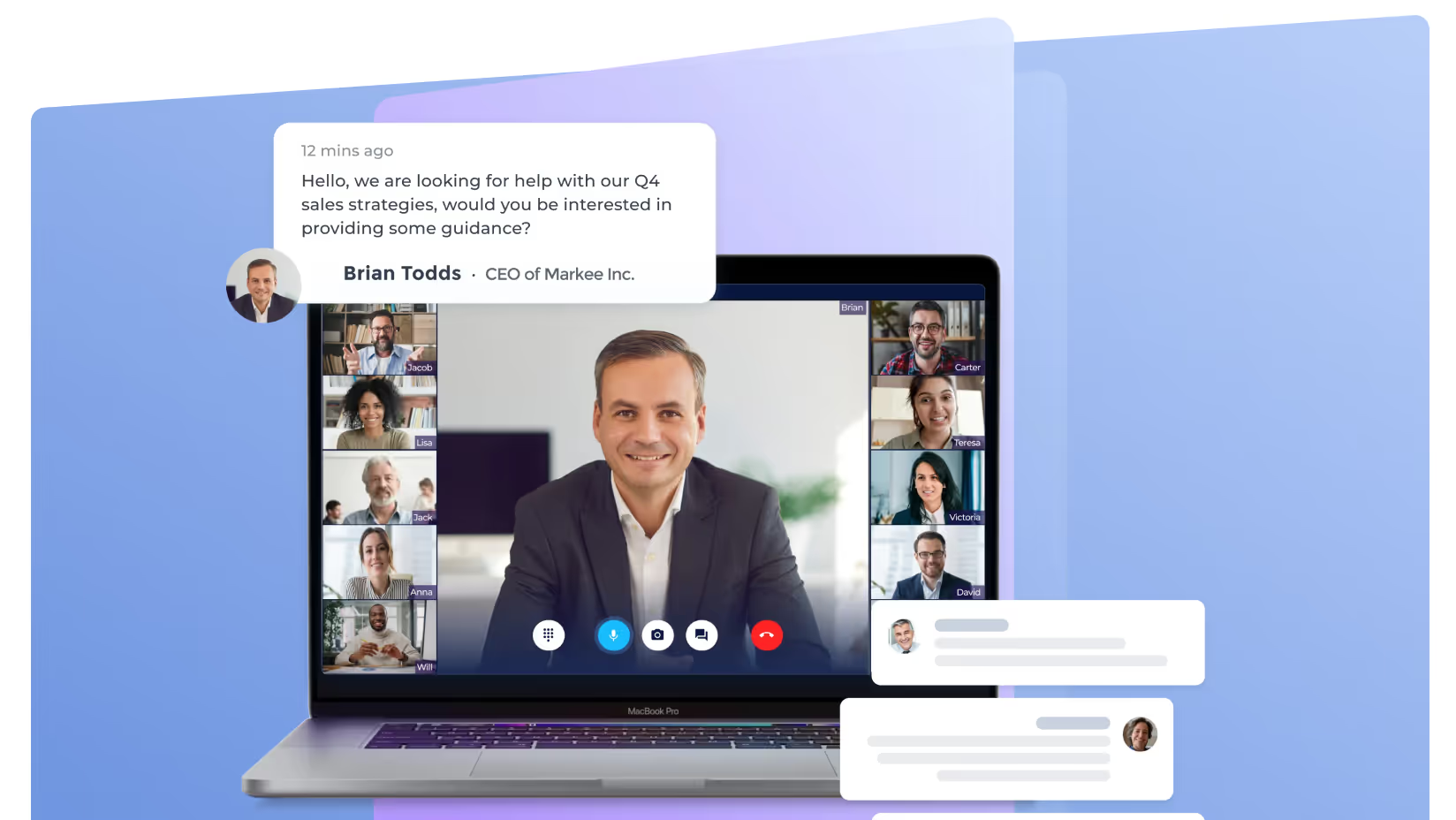March 6, 2023

Why employee development should be priority 1 for every CEO
As a successful business leader, investing in the development of your employees should be one of your top priorities. This is not only because it boosts employee morale and job satisfaction, but also because employee development is an integral part of achieving business success. Studies have found that companies that prioritize employee development tend to have improved productivity and overall better results.
Benefits of investing in employee development
Investing in employee development initiatives ensures that your employees remain committed to your company, while also increasing their job satisfaction. Developing employees also helps to attract and retain talent, as employees want to work for companies that actively invest in their development. Additionally, employee development has been found to reduce staff turnover and can help retain existing employees for longer.
Employees who are empowered and feel confident in their roles are better equipped to take on more responsibility and show creativity in problem solving. It allows employees to grow with the company, as well as develop skills that are beneficial to the company. Investing in the development of your employees can also have a positive impact on your employees’ communication and collaboration skills.
Why developing employees is a smart business move
From a financial perspective, investing in employee development is a smart business move. When a business invests in its employees, it increases the potential of its team to close deals, make more money, and decrease costs. Investing in employee development can lead to increased productivity, as there will be better-skilled and more knowledgeable staff working together to achieve common goals. Additionally, businesses that invest in employee development often have higher customer satisfaction rates.
Lastly, investing in employee development allows employees to stay up-to-date with the latest industry trends, practices, and technology. It provides employees with the necessary knowledge and skills to stay competitive within their respective industry.
How to create a successful employee development program
Creating a successful employee development program requires careful planning. The program should be tailored to the individual needs of employees, as well as to the company’s overall goals. Start by doing an assessment of the current skills and knowledge of each employee, and then come up with a plan to identify any gaps. Make sure to also consider the type of training that is most appropriate for each employee.
The next step is to create a budget and timeline for the program. It is important to determine how much resources you are able to allocate for the program and set achievable goals for each employee. Once those steps have been taken care of, you can start looking into possible training programs or workshops that will fit the needs identified.
Strategies to motivate employees to participate in development activities
Motivating employees to participate in development activities is essential for ensuring a successful program. Allowing employees to set their own goals within the program and providing feedback on their progress can be a great way to ensure that they remain engaged and motivated throughout the process. Additionally, having a reward system in place to recognize their achievements can also be a great motivator.
Another effective strategy is to involve employees in the decision-making process when it comes to setting goals or choosing the best training program for them. Allowing employees to choose and set the pace at which they complete the program can help them remain engaged and motivated throughout.
The impact of employee development on company culture
When done correctly, employee development has a positive effect on workplace culture. Investing in employee development shows employees that they are valued, as it gives them the opportunity to develop their skills and further their career paths. An empowered workforce is essential for fostering a positive workplace culture, as it encourages collaboration and fosters creativity.
Creating an environment where employees can feel safe to participate in open conversations and openly express their ideas is also essential for creating a positive workplace culture. Investing in employee development also helps build trust within the team, and can help create a more positive team dynamic.
What are the best tools for measuring employee development outcomes?
Measuring the outcomes of employee development initiatives can be challenging. One of the best tools for measuring results is performance appraisals. Performance appraisals allow you to evaluate each employee’s progress against their goals, as well as your wider business objectives. Additionally, you can use surveys to collect feedback from your employees and measure the effectiveness of your development initiatives.
You can also use benchmarking techniques such as key performance indicators (KPIs) or metrics such as return on investment (ROI) when evaluating outcomes. These tools are useful for understanding how well your program is working and where you should focus your resources if needed.
How to integrate employee development into your business model
Integrating employee development into your business model ensures that employee development initiatives are an essential part of achieving your business goals. This means you should consider including things like mentoring, training programs, and career development in your long-term goals.
You should also consider creating an internal framework for managing learning activities. This could include setting clear expectations for employees as well as providing support for their learning activities. Additionally, creating an environment where learning is encouraged and rewarded will help ensure that employees remain engaged in the program.
Examples of successful employee development programs from industry leaders
There are countless examples of companies that have been successful in their employee development initiatives. Google’s learning platform, Google+Me, has been an effective tool for helping employees learn new skills and advance their careers. Amazon’s Career Choice program offers tuition reimbursement to help employees pursue degrees that directly relate to their job roles.
Facebook offers its employees generous perks such as flexible working hours, access to professional development courses, and even stipends for continuing education programs. Microsoft has also been lauded for its commitment to providing its employees with access to educational programs and ongoing training.
Tips for getting senior leadership buy-in for an employee development program
Getting senior leadership buy-in for an employee development program can be tricky, however there are some strategies you can use to achieve it. One key factor is to ensure the program aligns with your company’s goals and mission statement. Presenting clear data points and demonstrating how investing in employee development will help achieve those goals can be effective in showing senior leadership why investing in employee development will benefit the business in the long run.
You should also consider presenting examples of successful programs from other companies within your industry. Additionally, have data ready that demonstrates how investing in employee development will help increase productivity, job satisfaction, morale, customer satisfaction, and so on.
How to use technology to optimize employee development initiatives
Using technology is one of the most effective ways of optimizing employee development initiatives. Technology can provide new opportunities for learning and allow companies to provide different types of content – from e-learning courses to online tutorials. Technology can also be used to create personalized learning plans for each individual employee that takes into account their specific needs and career goals.
Technology can also allow you to measure outcomes more accurately and quickly than traditional methods – this helps you track progress against goals more easily and identify areas where improvements may be necessary. Additionally, using technology can help make learning more engaging – allowing you to use video, audio and simulations – resulting in more effective training methods.
Challenges that might arise when implementing an employee development program
There are several challenges that may arise when implementing an employee development program such as difficulty allocating appropriate resources or time constraints. It is important that you consider all potential obstacles before starting any program, as these factors could significantly affect the outcome of the initiative.
The lack of incentives or recognition for participating employees is also a common issue when implementing an employee development program. It is important that you provide areas for recognition so that employees feel rewarded for participating in the program. Additionally, communication issues could arise if there is not enough managerial involvement in the program.
Ways to ensure employees are engaged with their development plans
There are several ways that you can ensure your employees remain engaged with their development plans. Firstly, involve them in the planning process – providing input on goals, training opportunities, etc - as this shows them that their opinions are valued and heard.
Regular feedback is also an important factor in ensuring employees remain engaged with their plans – acknowledging successes and offering constructive advice on areas where improvement may be required. Ensuring that tasks are challenging yet achievable can also help with engagement – providing learning opportunities without overwhelming them.
What metrics should you use to measure success in employee development?
When measuring success in employee development there are a few metrics that should be considered such as time spent learning, number of courses completed, knowledge retention rates, evaluation scores from tasks/exams/tests etc., and overall productivity or customer feedback ratings.
It is also important to consider ROI metrics such as cost savings or improved business results – considering factors such as retention rates or customer satisfaction levels will give you an accurate idea of how successful your program is. Lastly, surveys are an effective way of gathering feedback so that you can identify any areas that need improvement.
The role of feedback in driving successful employee development outcomes
Feedback is an essential component of driving successful outcomes when it comes to employee development. Not only does it provide employees with valuable information on how they are doing, but it also allows managers or trainers to identify any areas of improvement early on.
Regular feedback should be provided throughout the course of the program – either after each completed task/training session or periodically throughout – so that employees have time to adjust based on what they are learning. Lastly, feedback should contain constructive criticism instead of solely praising positive results – this helps improve performance as opposed to just maintaining it.
See what boards you match with.
See what you qualify for with our 2-minute assessment.


Similar Articles

August 20, 2025
Why Every Startup Should Have an Advisory Board
August 20, 2025
What role does a lawyer serve on an advisory board?
August 20, 2025
What every COO needs to do in their first 100 days.
August 20, 2025
Top 5 Business Advantages for Using Advisors
August 20, 2025
The Evolution of the Modern Business Professional
August 20, 2025
How to run an effective advisory board meeting
August 20, 2025
How to Become a Board Member
August 20, 2025
Five Steps to Finding a Board of Directors Role
August 20, 2025
Do You Want to Become a Professional Startup Advisor?
August 20, 2025
Building a Startup Advisory Board
August 20, 2025
AdvisoryCloud Named to 2019 Inc. 5000
August 20, 2025
Advisor vs. Consultant: Who drives the most business growth?
August 20, 2025
6 Advantages of Having a Small Business Advisory Board







